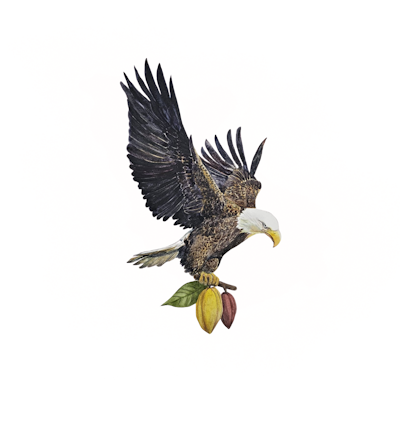
And at long last the darkness of winter draws to a close little by little, shedding light on a whole new scene…
The Chailleach; old woman of winter; goddess of the death phase; old crone; old hag, the time has come for you to lift your veil from over our eyes and sleeping minds, revealing, in turn, the exalted one, the bright and shining one, the one known to us as Brigid.
This year, the true astronomical date of Imbolg (or Imbolc) falls on Saturday 4th February. Imbolg is a pre-Celtic cross-quarter celebration marking the midway point between the Winter Solstice and the Spring Equinox. Imbolg can be translated literally to mean in my belly (i mo bholg); an intimation of things yet to come. For now, however, we must all be patient and wait, for just below the surface, The Great Mother sleeps, pregnant with new meaning. She is getting ready to give birth to new dreams. When quickened by the fiery arrow of the one they call Brigid, new life will spring forth from her womb, and a new season of growth will begin.
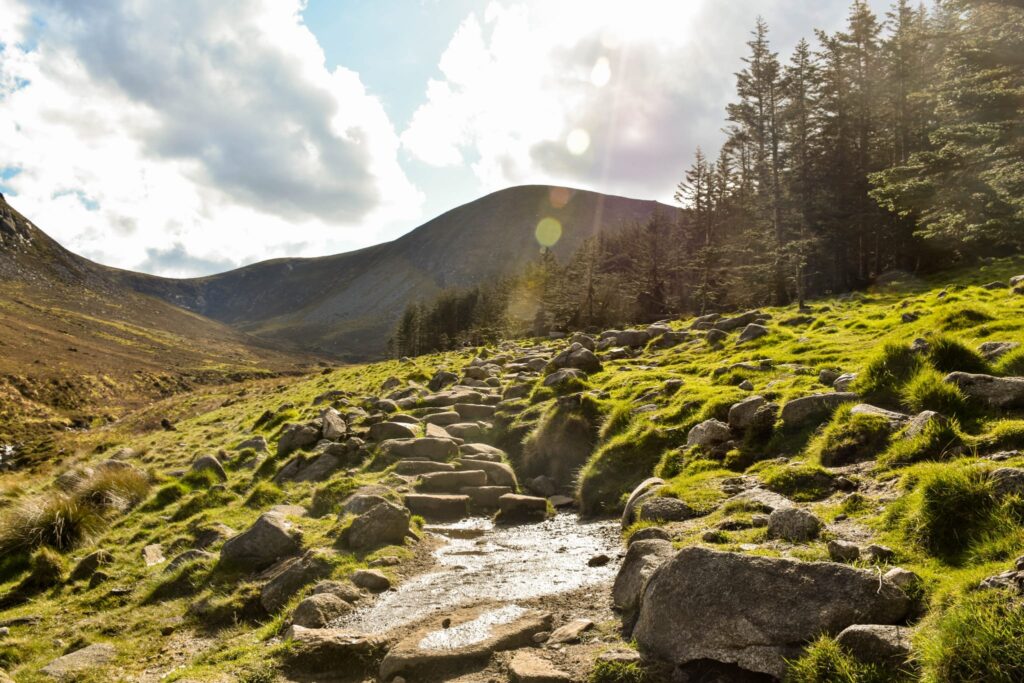
Imbolg can also be translated to mean ewe-milk, parturition (the action of giving birth), or lustration (purification by way of ceremony) (1). Along with pregnancy, Imbolg, therefore, is also associated with giving birth and breastfeeding. For the life-giving milk flows from mother at this time feeding her young newly born lambs. Furthermore, it is interesting to note, that nine months after the pre-Celtic cross-quarter fire festival of Bealtaine (2), when the fire that existed merely as a spark at Imbolg reaches the height and heat of sexual passion at Bealtaine, we arrive once again at Imbolg waiting to give birth.
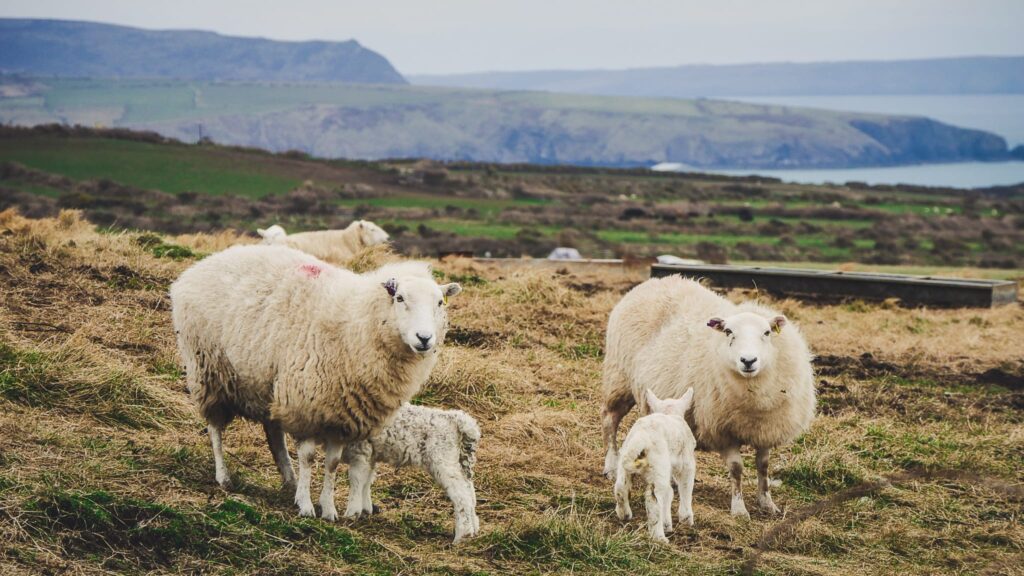
Imbolg is a celebration of the feminine, of fertility, of her creative power, and her ability to hold the tension between life, death, and rebirth. For she is a portal suspended between realms giving birth to spirit in physical form and nourishing young babes with her milk. The pre-Celtic Goddess Brigid stands for all this and more and her presence is felt strongly around the time of Imbolg (3). This is her time. The Chailleach has now relinquished control and recedes into the dark undergrowth to sleep for a while. In the meantime, Brigid prepares her fiery arrow to spark into life new growth from the fertile ashes of old.
The energetic qualities of fire embrace that of change, transformation, transmutation, purification and renewal. Celebrating Imbolg on its true astronomical date, when this spark of energy is quite potent to the touch, will, of course, align your ceremony and rituals with that of the ancients, your neolithic ancestors and the reason why they gathered together in ceremony (4). We can only assume our ancestors gathered in ceremony to celebrate Imbolg in accordance with the energies present at this very specific time of year, sharing themes such as new life, light, fire, purification, all before the newness of the coming year.
We know Imbolg (along with the other cross-quarter and quarter days) was celebrated by our neolithic ancestors making the festival of Imbolg over five thousand years old. We know this because of the clearly defined solar alignments built into the megalithic monuments that abound the land. These structures were designed to mark certain times of the year, they were also built to house the dead, as well a place to gather together in ceremony, celebrate, give thanks, make offerings, and honour the ancestors. We find a sunrise alignment illuminating Imbolg (and Samhain) at Cairn U on Sliabh na Calliagh (otherwise known as Loughcrew), Co. Meath (5). In fact, the cairns (or neolithic passage chambers) built on top Sliabh na Calliagh make for an impressive neolithic calendar, one which marks Bealtaine and Lughnasadh at Cairn S, the Summer and Winter Solstice at Cairn V and Cairn W respectively, along with the Spring and Autumn Equinox at Cairn T (6). We can also look to the Drombeg Stone Circle, Co. Cork, as another example of a neolithic calendar but this time the eight-part neolithic year is contained within one stone circle (7).
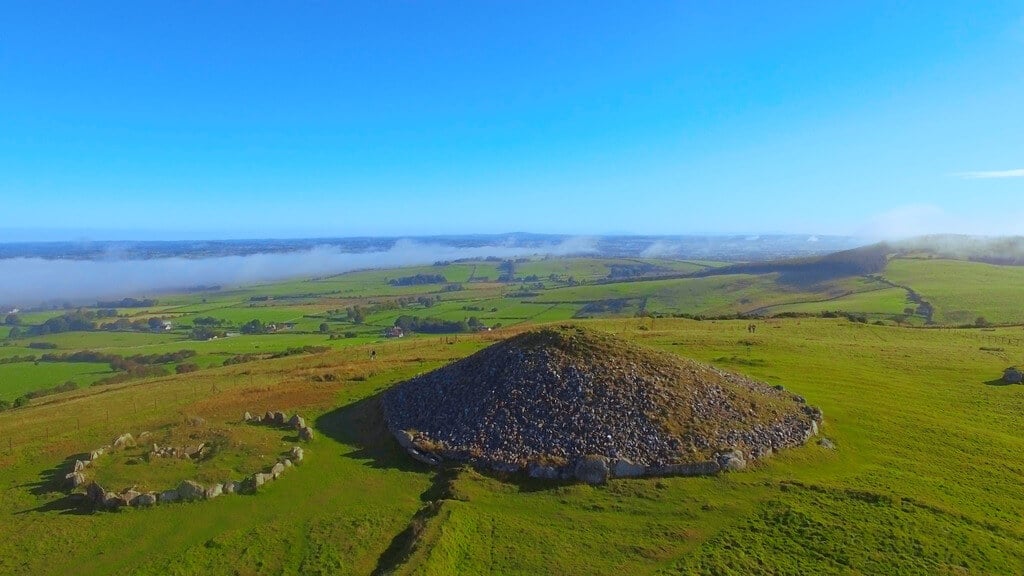
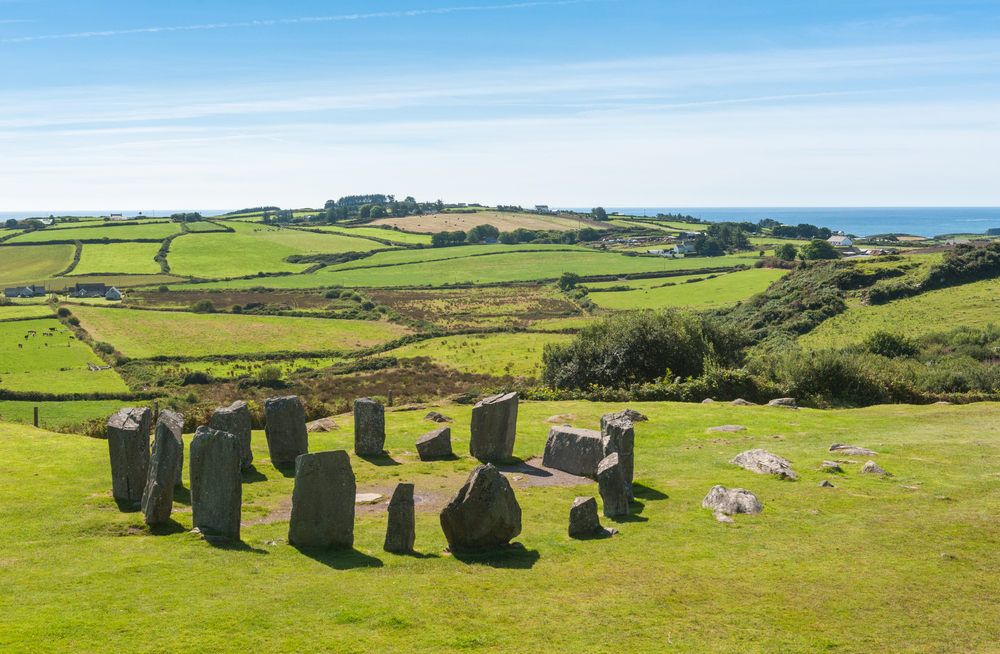
The mythology connected to Ireland’s neolithic stone monuments tell flourishing tales relative to the tribes who built them. Many of us have heard of The Tuatha Dé Danann (Tribe / People / Children of the Goddess Danú), who are said to be one of three early tribes that fought for power over the land (8). The Tuatha Dé Danann were victorious over the other two tribes and ruled in peace until the Celts arrived thousands of years later sending the Children of Danú into the underground by way of the barrow mounds where they still reside today and are now known as the faery race (9).
Similar to how Imbolg is usually referred to as a Celtic festival (10), Brigid is also said to be a Celtic Goddess. This is, however, not the case. There are many stories about Brigid’s lineage, nevertheless, all refer to her as being one of the Tuatha Dé Danann. According to one story, Brigid (“The Exalted One”) was birthed as an acorn (along with The Dagda, “The Good God”) as a result of the union between the Divine Waters of Danú and the Sacred Oak of Bíle. The Dagda and Brigid were charged with the task of populating the earth with the Children of Danú starting with Inishfáil (Island of Destiny), “the place where the bright sun vanishes each evening” (11). Another story tells of how Brigid is actually the daughter of The Dagda and an unnamed mother (12). Some tell of how Brigid and Danú are actually one and the same (13). Another story I heard recently speaks of how The Chailleach is in fact Brigid’s mother, and another that The Chailleach and Brigid are also one and the same (14).
Brigid is commonly known as a Mother Goddess, sometimes, however, she is represented by way of her maiden aspect, especially around the time of Imbolg when new life is just becoming. Brigid is also said to be a Triple Goddess but not typically that of Maiden, Mother, Crone. Although, if we understand Brigid to express the energy of Maiden, Mother (overall), and also the energy of Crone (as The Chailleach), then perhaps Brigid is a Triple Goddess in more traditional terms after all. However, in an ancient Irish text entitled Sanas Cormaic (Cormac’s Glossary), we find Brigid being referred to as a Triple Goddess of Poetry, Healing and Smithcraft. Brigid was known as “a female poet… a poetess, or a woman of poetry… a Goddess whom poets worshipped… a woman of healing, woman of smith-work… breo-saigit, a fiery arrow” (15).
The same text mentions how all Goddesses were named Brigid along with all her sisters (priestesses) (16). This might help to explain how we end up swirling in a pool of Brigid’s energy today in a fusion of Goddess, Saint and various folk traditions. With all our ancient celebrations being Christianised and brought into a more modern calendar as feast days etc. it’s no wonder there exists many a confusion about our ancient practices. Imbolg is no exception. If we want to honour the Goddess Brigid, and tap into the potent energy of Imbolg, then we must align our ceremonial rituals with the true astronomical date. However, if we wish to celebrate the life of Saint Bridget, then we can do that on her Christian feast day.
Some common rituals include the making of a cross made from rushes on the Eve of Imbolg (or Saint Bridget’s Day if you’re celebrating the Christian feast day). They say that the four-sided cross is attributed to Saint Bridget, while the three-sided cross is much older and represents the Triple Goddess Brigid (17). Either way, it is customary to ritualistically burn last year’s cross and replace it with a new one each year. The cross is to be placed in the home over a doorway or window to protect the home and its occupants, and can also be hung over the entrance into any outbuildings where animals reside.
Another ritual practiced on Imbolg Eve (or 31st January depending again whose energy you are observing and want to connect with) was the leaving out overnight of a piece of cloth (Brat Bríde) which is said to be touched by the curative power of the Goddess (or Christian Saint) as she walks the land. It is customary then to wear this piece of cloth as an amulet or offer it to someone who requires healing. The making of a Brideóg, an effigy in the form of a large straw doll clothed in fabric dress, was another custom practiced in some parts of Ireland. A group of Biddy Boys dressed in straw costume would then go from house to house with the effigy collecting food (or money) in exchange for a blessing of protection (18).
All of the folk traditions surrounding the festival of Imbolg and/or Saint Bridget’s Day look to the Goddess (or Saint) for protection and/or healing. She exudes that loving nurturing protective mother energy for the people of Ireland and always has throughout all time. Her energy may have been co-opted by the Christian church perhaps in an attempt to quash it completely under patriarchal doctrine, however, they failed in their attempt and her story still lives on today in the hearts and minds of the Children of Danú.
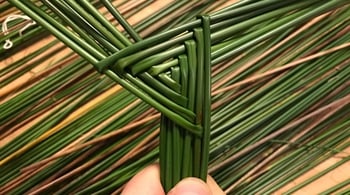
Footnotes
- Condren, M. (1989) The Serpent and The Goddess: Women, Religion and Power in Celtic Ireland. Harper Collins. p. 58
- Bealtaine marks the midway point between the spring equinox and the summer solstice.
- The pre-Celtic Goddess Brigid must not be confused with the selfsame named Saint and Abbess of Kildare (c. 450 – 524 CE). The Christian church dedicated February 1st as the feast day of Saint Bridget. This was typical of the church to replace the sacred celebrations of the older “religion” and their gods and goddesses with that of their new saints and feast days in an attempt to supplant the old ways of sun worship and overall reverence for nature. The feast day of Saint Bridget is a co-opted version of the pre-Celtic cross-quarter fire festival of Imbolg brought forward for the Gregorian Calendar introduced in 1582 by Pope Gregory XIII, to coincide with, and over time, supplant the energies of Imbolg with that of their own ideologies, and to replace the pre-Celtic Goddess Brigid with that of their own Saint Bridget.
- This applies to all the quarter (Winter Solstice, Spring Equinox, Summer Solstice and Autumn Equinox) and cross-quarter days (Imbolg, Bealtaine, Lughnasadh and Samhain) celebrated on their true astronomical dates by our neolithic ancestors.
- Imbolg (Feb) opposes Samhain (Nov) on the pre-Celtic Wheel of the Year.
- For more information on the neolithic calendar of Sliabh na Calliagh, please see: https://youtu.be/03leqUd7kGs
- For more on the Drombeg Stone Circle, please see: https://youtu.be/KOFY-6sG1v0
- The other two tribes were known as The Fir Bolg (Men of the Belly / Bag) and The Formorii (Children of the Dark Goddess Domnu).
- For more on these stories please see: Kerrigan, J. (2015). Old Ways, Old Secrets: Pagan Ireland. O’Brien Press. pp. 13-16 and Ellis, P. B. (2002) Celtic Myths and Legends. Running Press. pp. 25-34
- Imbolg is generally referenced as a Celtic festival. It is quite evident, however, that Imbolg, celebrated by our neolithic ancestors, is in fact very very pre-Celtic. The Celtic tribes did not arrive in Ireland until approximately 300-500 BCE which was long after our neolithic ancestors were marking out their eight-part wheel of the year by way of stone structures. And just to highlight that it is NOT a Celtic wheel of the year but a very very pre-Celtic wheel of the year which celebrates the four quarter and four cross-quarter days.
- Ellis, P. B. (2002) Celtic Myths and Legends. Running Press. p. 27
- Daimler, M. (2016). Pagan Portals: Gods and Goddesses of Ireland. Moon Books Publishing. p. 35
- Ibid
- Condren. M. (Feb 2022) Online Conference entitled: The Many Lives of Brigid.
- Condren, M. (1989) The Serpent and The Goddess: Women, Religion and Power in Celtic Ireland. Harper Collins. p. 57
- Ibid
- McGarry, M. (2020). Irish Customs and Rituals: How our ancestors celebrated life and the seasons. SPRINTprint Ltd. pp. 12-13
- Ibid. pp. 10-14
